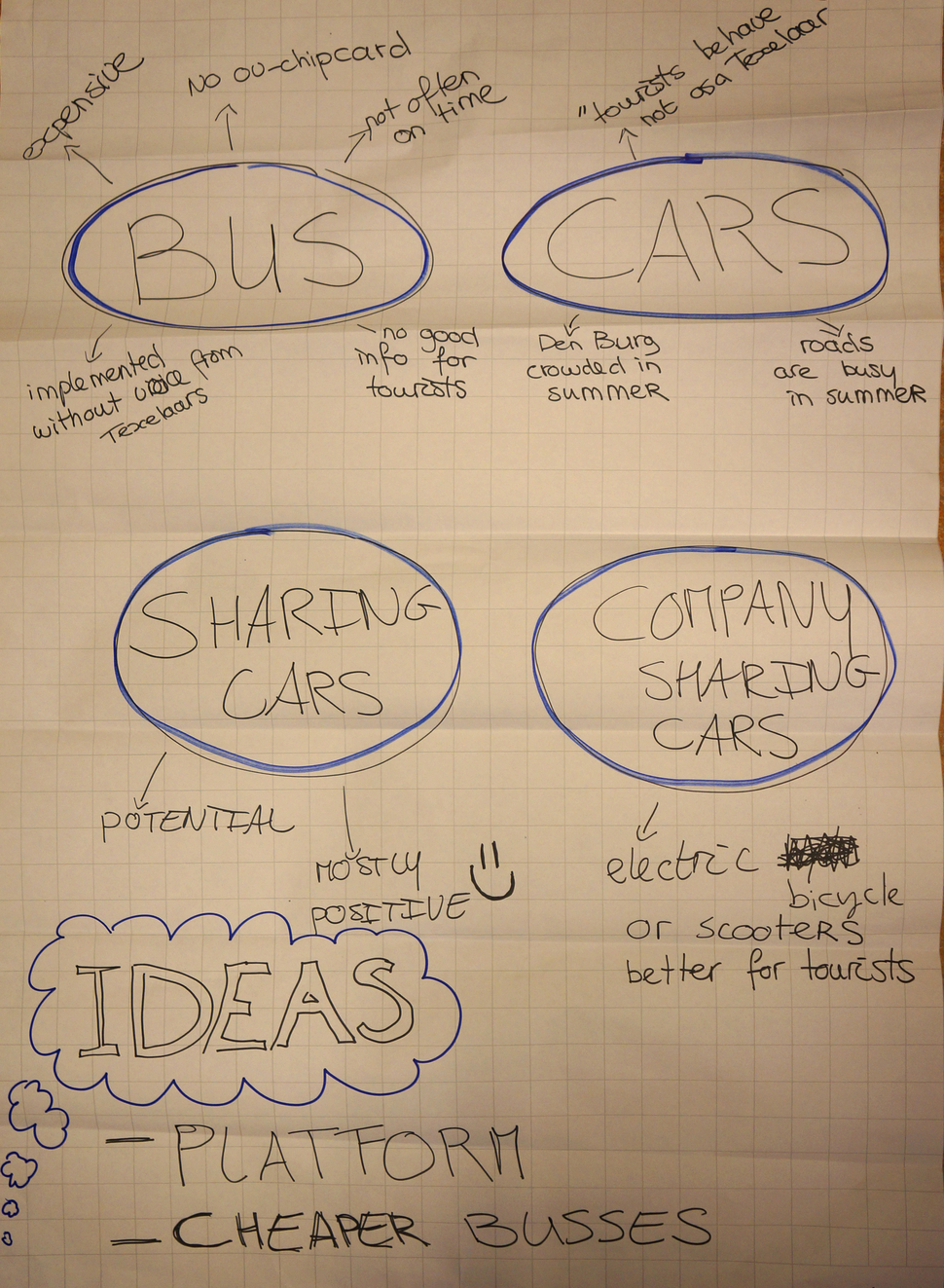On the second day of the Bubble week, we went to Den Burg and talked to some locals about our subsystem. We prepared questions in relation to the future scenario that we have been building. The purpose of it was to identify their perspective on the development of transport in the island and to find areas where there is potential for design. The following questions have been asked to 11 people of different ages, occupations and relation to Texel:
- What types of transport do you use in the island? For which purpose each?
- How do you feel the transportation during the tourist season?
- What’s your opinion on tourists bringing their cars to the island?
- Which changes do you believe that could improve the current situation?
- Would you consider sharing your car with somebody?
- Would you offer a drive to tourists from mainland to Texel or viceversa?
- Explanation of the car sharing company initiative (green wheels). Do you think it would be successful in Texel?
From these questions we drew some conclusions:
Cars on the island
It is shared that there is an increase of cars during season but this is not commonly perceived as a problem. The presence of the tourists is very much felt on the roads to the beaches and on the parking lots from some beaches and Den Burg. Also, some locals complain about the driving behaviour of tourists, though the opinions are different (e.g. some say they drive too fast and others that they are slow while doing sight-seeing).
The Bus network
Most of the interviewed agreed on the too high price of the bus tickets. A family in a car must pay 15€ one-way on the ferry, while 5 people taking the bus from Den Helder to Den Burg (travelling inside the ferry) pay 27,50€. In addition, it is inconvenient that the bus is not using the OV-chipkaart technology and that the user must buy the ticket in a special office. Some locals also complain about the lack of punctuality of the service and the unclear information that the websites provide (especially about the bus going inside the ferry). Finally, a few of the interviewed argued that during the implementation of the Texelhopper, little consultation was made to the Texelaars and, therefore, the network is not very felt theirs.
Sharing cars
A lot of Texelaars (except for old people) own a car and use it frequently to do mainland trips or to go to other parts of the island. Car sharing between friends was not felt as a very spread practice although it is thought that it could work in bigger population centres like Den Burg.
The same reaction was received in regard to the applicability of a cars sharing company like “green wheels”. It was also thought that these vehicles could not only be conventional cars but also electric bikes and scooters.
After the field work, in a discussion, we came up with some ideas that could be implemented:
- The creation of a car sharing platform such as blablacar that would put in touch car owners driving to/from the island with passengers without a car. The success of this idea would be that every time that somebody plans a trip with their car, shares it in an application and other travellers can join and pay a little to the driver. As a result, the occupation of the cars would increase and, therefore, the number of cars would be much lower.
- The Texelhopper network could be improved and shaped according to the needs of tourists and Texelaars. This could be done in a way inspired by participatory design processes like the case of Ponta Delgada, in the Azores islands, among others. An important factor that blocks a lot of Texelaars from using the bus network is the high prices of the tickets.
